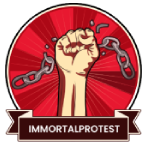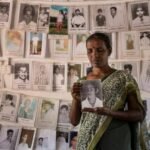What impact does political activism have on the rights and recognition of minority communities globally?
Political activism plays a crucial role in advancing the rights and recognition of minority communities globally. Its impact can be seen in various dimensions:
### 1. **Awareness and Visibility**
– **Raising Awareness**: Activism helps bring attention to the issues faced by minority communities, such as discrimination, social injustices, and human rights violations. This increased visibility can lead to broader public support and understanding.
– **Media Coverage**: Activist movements often attract media coverage, which can amplify their messages and highlight the plight of marginalised groups, fostering empathy and solidarity.
### 2. **Policy Change**
– **Legislative Advocacy**: Activists often engage in lobbying efforts to influence policymakers and push for laws that protect minority rights, such as anti-discrimination legislation or affirmative action policies.
– **International Pressure**: Global activism can lead to international pressure on governments to uphold human rights standards, prompting changes in policy and practice.
### 3. **Empowerment and Community Building**
– **Grassroots Organising**: Activism fosters community organisation and mobilisation, empowering minority groups to advocate for their rights collectively. This sense of solidarity can strengthen community identity and resilience.
– **Leadership Development**: Activist movements often cultivate leadership within minority communities, enabling individuals to become advocates, spokespeople, or elected representatives.
### 4. **Legal Recognition and Rights**
– **Recognition of Rights**: Political activism has led to the recognition of specific rights for minority groups, such as indigenous land rights, language rights, and cultural preservation.
– **Judicial Outcomes**: Legal challenges initiated by activist organisations can result in landmark court decisions that affirm the rights of minority communities.
### 5. **Cultural and Social Change**
– **Challenging Stereotypes**: Activism often seeks to challenge and change societal attitudes and stereotypes about minority communities, promoting inclusivity and respect.
– **Cultural Representation**: Activist efforts can lead to greater representation of minority voices in media, arts, and public discourse, contributing to a more diverse cultural landscape.
### 6. **Global Solidarity and Alliances**
– **Transnational Networks**: Activism often transcends national boundaries, creating alliances among minority groups globally. This solidarity can lead to shared strategies and resources, enhancing the effectiveness of advocacy efforts.
– **Human Rights Frameworks**: Activists often leverage international human rights frameworks, such as the United Nations Declaration on the Rights of Indigenous Peoples, to advocate for minority rights on a global scale.
### 7. **Challenges and Resistance**
– **Backlash**: Political activism can sometimes provoke backlash from those in power, leading to repression, violence, or attempts to undermine the movement. Activists may face legal obstacles or social ostracism.
– **Sustainability**: Maintaining momentum in activism requires resources, organisation, and commitment, which can be challenging over time, especially in the face of opposition.
In summary, political activism is a powerful tool for advocating for the rights and recognition of minority communities. It has the potential to effect meaningful change, promote social justice, and enhance the quality of life for marginalised groups around the world.






